MARKET OVERVIEW
The Global Green Aluminum market is just one of the specialized niches the aluminum industry commands, defined by its emphasis on responsible production methods. Mainly comprised of aluminum products produced with fewer carbon emissions involved than standard aluminum products, it uses more often renewable energy, like hydro electricity or sun power, during the manufacturing process. Now, green aluminum has emerged as a necessary part in enabling supporting industries to achieve net-zero carbon emissions globally, primarily driven by growing consciousness of environmental issues and global regulatory expectations for sustainable operations. The market thereby encompasses a wide array of applications that include automotive, aerospace, construction, packaging, and electronics, where manufactures are in search of sustainable solutions that reduce the footprint of their environment.
It’s the adoption of cleaner technologies in smelting and refining that makes the Global Green Aluminum market unique. Aluminum is usually produced through an energy-intensive process with a high output of greenhouse gas emissions during production. However, green aluminum is produced with more advanced technologies and efficient energy systems to minimize environmental impacts. Some of the major manufacturers in the industry are now recycling post-consumer scrap aluminum to realize further emission and natural resource savings. Recycling is a critical area because it only requires a small fraction of the energy needed to produce primary aluminum.
Manufacturing practices span beyond the product supply chain and affect the dynamics with customers as well. Companies operating in this space are integrating sustainability into every aspect of their operations-from raw material sourcing to delivery of the product. As global brands in sectors such as automotive and consumer goods set ambitious sustainability targets, the demand for green aluminum will grow steadily. This market also supports the development of certifications and traceability systems to ensure transparency regarding the environmental impact of aluminum products. Such initiatives will enable consumers to make well-informed decisions about purchases, taking into account the verifications of environmental performance.
Geographically, the Global Green Aluminum market will be significant in regions that enjoy easy accessibility of renewable sources of energy and superior infrastructure, which include North America, Europe, and parts of Asia-Pacific. Their governments will tend to enforce stricter carbon-related regulation and green production incentive policies that are likely to promote more market growth. Another critical factor that will shape the future of this market is the emphasis on transitioning towards a circular economy, wherein stakeholders along the value chain realize that reusing material is the way to achieve sustainability in the long term.
The Global Green Aluminum market will further see collaboration with key players with partnerships to work on technological advances and expand in production in coming years. Development will focus research on new procedures to minimize energy inputs and remove impurities in producing green aluminum products. The rise of digital innovation, such as blockchain technology, will enable improvements in traceability and accountability through enhanced customer relationships in green aluminum products.
The Global Green Aluminum market will be at the forefront of environmental progress in the aluminum industry as industries everywhere shift toward sustainable solutions. Its growth will be symbolic of a big step toward decarbonizing one of the world’s most widely used metals.
Global Green Aluminum market is estimated to reach $146,908.59 Million by 2032; growing at a CAGR of 6.5% from 2025 to 2032.
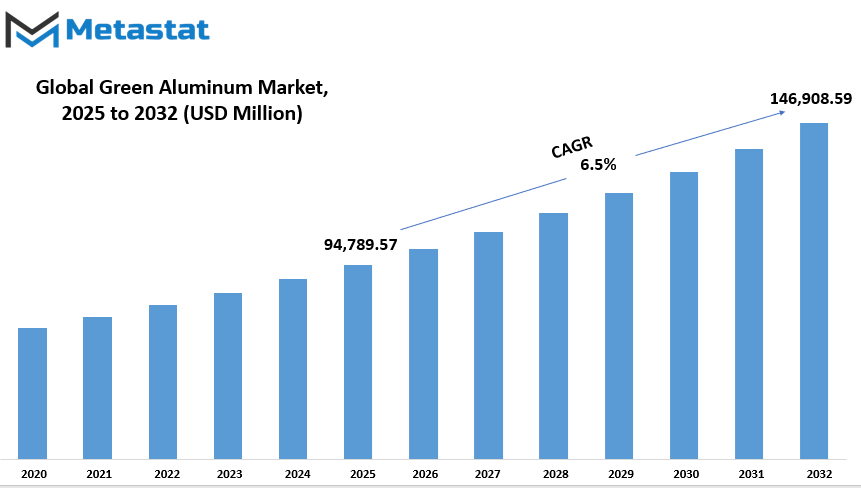
GROWTH FACTORS
Several critical factors are revolutionizing industries in the world by driving growth in the Global Green Aluminum market. Chief among these factors is the surging demand for sustainable materials. The automotive and construction sectors are driving this demand in particular. Such industries are shifting towards green aluminum as a better alternative to reduce their environmental impact. The demand is expected to be on the rise in the future with numerous companies embarking on sustainability goals and reducing their carbon footprint.
The other motivating factor is the strict environmental legislations compelling the industry to follow low-carbon manufacturing routes. Carbon emission regulations are becoming increasingly rigorous across the globe, nudging manufacturers to pursue cleaner and greener paths of production. The new regulations will mitigate climate change but also create a strong push for innovations in green aluminum production. As the regulation becomes more potent, the demand for green aluminum is likely to increase, leading to new market growth opportunities.
Despite these factors driving the growth of the market, there are challenges that can hinder its development. One of the primary barriers is the higher cost of producing sophisticated green technologies. The increase in advanced processes and materials used to produce green aluminum can make it more expensive than traditional aluminum, creating a financial burden for manufacturers to adopt these technologies. Furthermore, the availability of renewable energy sources varies geographically, and it is still scarce in some regions. Renewable energy is quintessential in the production of green aluminum to ensure efficiency. This shortage might make the wide-scale use of green aluminum a little challenging, especially in regions with less sustainable sources of energy.
The Global Green Aluminum market is expected to experience significant opportunities in the near future. The promising future of electric vehicles using green aluminum is the greatest prospect. As the electric vehicle sector grows, so will the demand for lightweight and sustainable materials. Green aluminum offers a solution that aligns with the industry’s goal to reduce emissions and improve energy efficiency. Furthermore, the expansion of renewable energy infrastructure provides another avenue for growth. Green aluminum can be used in various renewable energy applications, such as wind and solar power, where sustainability is a top priority.
The Global Green Aluminum market's challenges in terms of production costs and energy availability should wane over the next few years as a result of the increasing demand for more sustainable materials and stricter environmental regulations. The drive in electric vehicles and renewable energy infrastructure expansion will also hold great opportunities within the market.
MARKET SEGMENTATION
By Production Method
Global Green Aluminum is emerging as a rising star in this move towards sustainable and environmentally friendly manufacturing practices in the world. Rising awareness about climate change and carbon emissions is causing industries to be increasingly focused on green technologies. In this direction, aluminum is being produced. This metal has applications in many industries, such as construction, automobiles, etc. It will significantly increase in size, powered by the development of green products and increasing concern about reduced environmental footprint.
Green aluminum manufacturing can be divided into several major streams and is primarily about reducing carbon emissions linked with aluminum production. Of these, one important method is Primary Aluminum Production. This process of extracting aluminum from bauxite ore is referred to as the Bayer process, followed by electrolysis. Although this is an energy-intensive production process, clean technologies are currently under development to minimize the carbon footprint involved with this production process.
Increasing demand for green aluminum is causing companies to invest in more energy-efficient techniques that work towards reducing the environmental impact associated with primary aluminum production. In the following years, this segment will keep on adding heavily to the market, which is estimated to be worth $60,491.13 million.
Another important aspect of the Global Green Aluminum market is Secondary Aluminum Production, or aluminium recycling. Aluminium recycling is a process of reprocessing aluminium scrap and waste into aluminium products that is much less energy-intensive than primary production. The recycling process saves quite a lot in terms of carbon emissions and reduces energy consumption as well, thereby making it the main actor towards greener manufacturing.
With increased focus on the circular economy, reduction of wastes, and many more, demand for secondary aluminium production will tend to increase as well. Thus, this recycling process will find a place among sustainability targets with aluminum production made more environmentally friendly.
Another vital market area for low-carbon aluminum production is as low as reducing carbon content itself, through designing alternative production and processes using, for example, renewable energy instead of fossil, or new innovation smelting techniques. Of course, there is a probability that with better advancements in newer technologies, industries are going to take more time looking forward in fulfilling environmental requirements for compliance.
Other production methods of green aluminum are coming into the limelight as companies are looking for ways to make the production of aluminum more environmentally friendly. These innovations will shape the future of the market, which will help in speeding up the transition to a cleaner aluminum industry. The world demand for greener solutions is increasingly growing, meaning the global green aluminum market is going to evolve by including more methods of production with a purpose and working towards cleaning up a dirty future.
By End-Use industry
The Global Green Aluminum market is highly growing since the industries focus on reducing the impact on the environment. This aluminum is prepared in an eco-friendly way that saves carbon footprint compared to conventional aluminum preparation. Such a material is indispensable for the industries, especially for those interested in more rigorous environmental standards and going green in operations. For the future prospects, the market will grow significantly with the growth in demand for green materials by the various industries.
Transportation is one of the significant contributors to the Global Green Aluminum market growth. This is because aluminum will be used in various vehicle making such as cars and trucks due to its light weightiness. It is such a material that is used in the production of airplanes whereby fuel efficiency and carbon emissions are improved. With the advancement in electric vehicles (EVs) and more energy-efficient transportation solutions, the need for aluminum made through sustainable processes will continue to become a significant variable in reducing the carbon footprint of the industry.
The construction industry, in particular, will feature green aluminum at the forefront in shaping the future of sustainable building practices. Aluminum is a widely used material for windows, doors, roofing, and other structural components due to its durability and recyclability. As the world continues to focus on energy-efficient buildings and eco-friendly construction materials, the demand for green aluminum will increase. Future developments will likely focus on making aluminum even more energy-efficient, promoting a circular economy where materials are reused and recycled, reducing the overall environmental impact of construction projects.
Packaging is another major end-use industry where green aluminum will find maximum use. The demand of eco-friendly packaging solutions is increasing with increasing awareness in consumers about the environment. Aluminum packaging is lightweight, corrosion-resistant, and recyclable, making it an attractive option for companies looking to reduce waste and increase sustainability. With plastic pollution concerns increasing day by day around the world, the transition of the packaging industry towards green aluminum is bound to change the landscape in years to come and bring about a much more sustainable future.
The electronics industry will also make extensive use of green aluminum in producing devices like smartphones, laptops, and home appliances. Technology continues to advance with a greater demand for light yet durable materials that can cope with the complexity of modern electronics. Green aluminum presents a solution that minimizes the environmental footprint of electronic devices without sacrificing performance and quality.
Finally, it will benefit machinery manufacturing with an increased use of green aluminum because lightweight, hard materials are always required in producing machinery that should be precise and durable. While companies focus on being sustainable, it will support future demand for eco-friendly machinery.
The Global Green Aluminum market will see significant growth in the coming years as transportation, construction, packaging, electronics, and machinery begin to adopt more sustainable materials. With advancing technology and increasing environmental awareness, green aluminum will be an increasingly important material in the quest for a greener future.
|
Forecast Period |
2025-2032 |
|
Market Size in 2025 |
$94,789.57 million |
|
Market Size by 2032 |
$146,908.59 Million |
|
Growth Rate from 2024 to 2031 |
6.5% |
|
Base Year |
2024 |
|
Regions Covered |
North America, Europe, Asia-Pacific, South America, Middle East & Africa |
REGIONAL ANALYSIS
The Global Green Aluminum market seems to be undergoing a rather drastic change, as there is an increased focus on sustainability and environmental protection. The growing need for eco-friendly products has forced the aluminum industry to adapt to changing expectations from the market scenario. This shift is more than merely introducing new technologies and aligning itself with global market demands but also regional needs and other regulations that differ from one place to another around the world. The market direction will be determined by regional dynamics. Various regions are different in terms of demands, available resources, and government policies regarding the production of green aluminum.
The market in North America is expected to rise rapidly during the forecasted period. This region comprises three countries-the United States, Canada, and Mexico, and each of these countries has their approach to green aluminum. For example, there is a high focus on renewable energy sources, carbon emission reduction, and high demand for low-carbon aluminum in the United States. Being endowed with much hydroelectric power, Canada already stands in good positions to contribute in the production of aluminum in the world using less carbon than others. And Mexico is building its economy as green as possible, putting green aluminum on the list. The demand for green aluminum will only grow with the continuing efforts of industries in the region to be more sustainable.
The European countries of the UK, Germany, France, and Italy are leading the green revolution of aluminum production. These countries have a very strict set of environmental regulations and a high focus on carbon footprint reduction, so they are basically setting the bar for sustainability within the global market. Germany, known for its advanced industrial technologies, is expected to lead the way with innovations in low-carbon aluminum production. Meanwhile, UK is committed to carbon neutrality by 2050, which will have greater investments in sustainable manufacturing processes, leading to significant growth in green aluminum demand.
Asia-Pacific Countries: Countries such as India, China, Japan, and South Korea, are to witness green aluminum business with major expansion. The aluminum industrial sector of China, the largest aluminum producing country in the world, has now upped its focus to reduce emission and improve energy efficiency. The advanced manufacturing sectors of Japan and South Korea will also use green aluminum to fulfill the domestic as well as international demand for green products. India, with its rapidly expanding industrial infrastructure, should be one of the better markets that will make headway in adopting green aluminum as part of its larger environmental agenda.
The green aluminum production in countries like Brazil and Argentina in South America should remain steady. There has been an ever-increasing interest in environmental sustainability, and South American nations have begun exploring green alternatives for their manufacturing industries. The Middle East & Africa region, including countries such as those in the GCC, Egypt, and South Africa, will also expand towards green aluminum adoption.
However, the pace may vary with the region's availability of renewable energy sources and its willingness to address issues that concern the environment. The global green aluminum market will move region by region, with different regions contributing toward the growth of sustainable aluminum production.
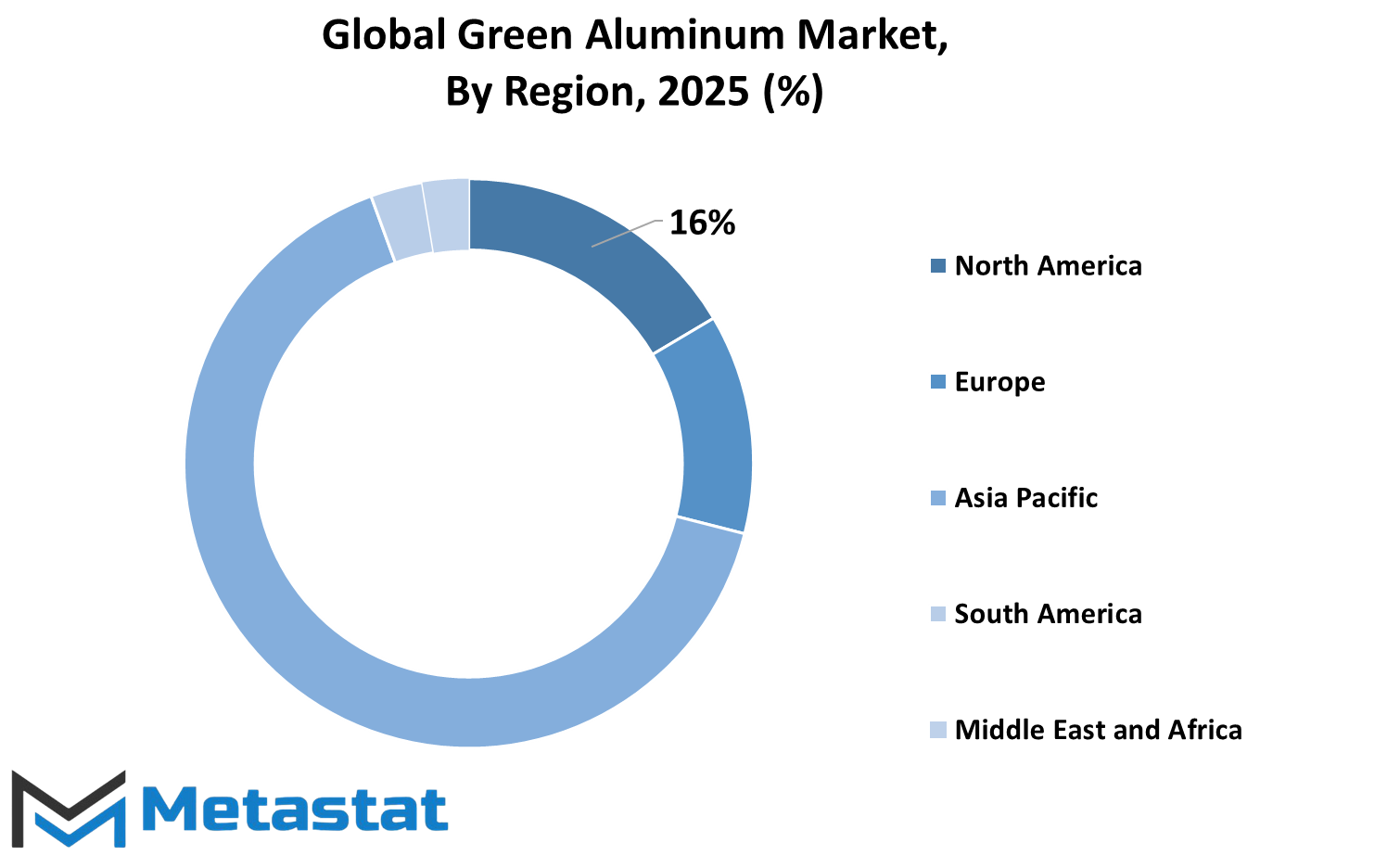
COMPETITIVE PLAYERS
With a shift toward sustainability in the Green Aluminum market, global key players are all set to lead the charge in this transition. As the demand for environmentally-friendly aluminum solutions increases worldwide, the role of these companies is becoming increasingly important. Hydro Extrusion is a key company in this area and continues to drive change through reduction in carbon emissions in green aluminum production processes. Their efforts to make aluminum more sustainable are benchmarking the industry, pushing competitors to innovate in similar ways.
Global Aluminium is another significant entity in the market, contributing heavily to the growth of green aluminum by implementing cutting-edge technologies. The company's strategies focus on reducing the environmental impact of aluminum production, which aligns with the increasing global focus on sustainability. The push toward reducing emissions and energy consumption is reshaping the future of the aluminum industry, with Global Aluminium making strides in adopting eco-friendly practices.
Hydrogen Europe also plays a significant role in integrating hydrogen into aluminum production. Hydrogen Europe is making tremendous progress in reducing the carbon footprint of aluminum manufacturing by incorporating hydrogen as a cleaner alternative to traditional methods. Their commitment to greener production methods is transforming the landscape of the global aluminum sector, with the company positioning itself as a leader in the race for greener alternatives.
The EN+ Group is one of the more notable players in the market and has been aggressive regarding its goals of increasing sustainable practices within its aluminum manufacture processes. Its investments in renewable energy and green technologies are signs of a carbon-free future. These are changing the configuration of this industry as it is likely to encourage others in the pursuit of the same cause since sustainability remains the theme of the times in the ongoing market.
China Hongqiao Group Limited is the other big player that will really impact Green Aluminum's future. It has currently scaled up in producing and has heavily invested in green practices. Their developments on cleaner technologies, which also focus on significant emissions reductions, will impact the growth path of the industry.
In addition, Century Aluminum Company and UACJ Corporation are also set to impact the market once they implement the measures for reducing their environmental impact. Once these companies employ cleaner production techniques in their activities, they shall significantly influence the industry in adopting sustainability. These companies are bound to set a precedent for other firms to prevent stagnation in such industries.
These key players will determine the future of the Green Aluminum market, which is a joint effort to create a more sustainable and environmental friendly industry. As technology continues to evolve, the competition will grow and drive the entire industry toward greener solutions. This movement toward sustainability is not just a trend but a necessity, and the companies driving these changes are laying the groundwork for a cleaner, more sustainable aluminum industry.
Green Aluminum Market Key Segments:
By Production Method
- Primary Aluminum Production
- Secondary Aluminum Production (Recycling)
- Low-Carbon Aluminum Production
- Others
By End-Use Industry
- Transportation
- Construction
- Packaging
- Electronics
- Machinery
- Others
Key Global Green Aluminum Industry Players
- Hydro Extrusion
- Global Aluminium
- Hydrogen Europe
- EN+ Group
- China Hongqiao Group Limited
- Century Aluminum Company
- UACJ Corporation
WHAT REPORT PROVIDES
- Full in-depth analysis of the parent Industry
- Important changes in market and its dynamics
- Segmentation details of the market
- Former, on-going, and projected market analysis in terms of volume and value
- Assessment of niche industry developments
- Market share analysis
- Key strategies of major players
- Emerging segments and regional growth potential



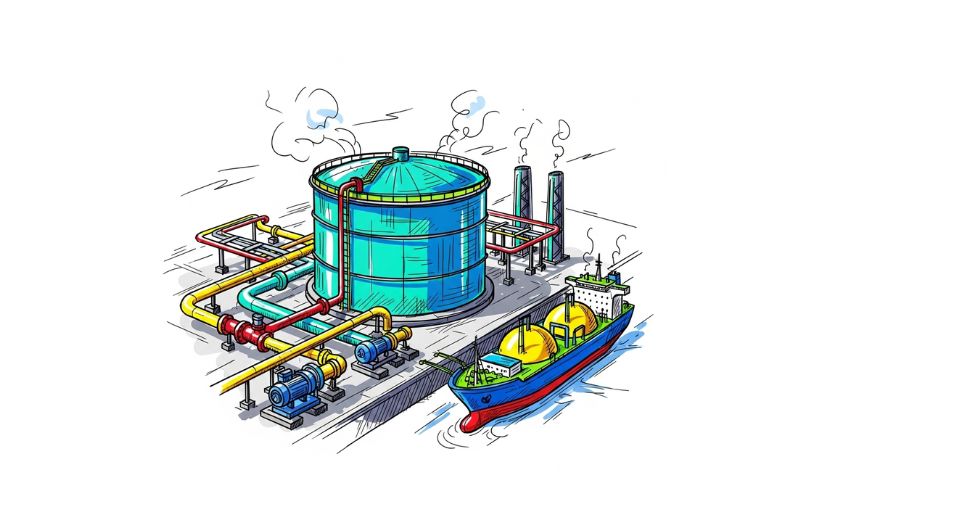
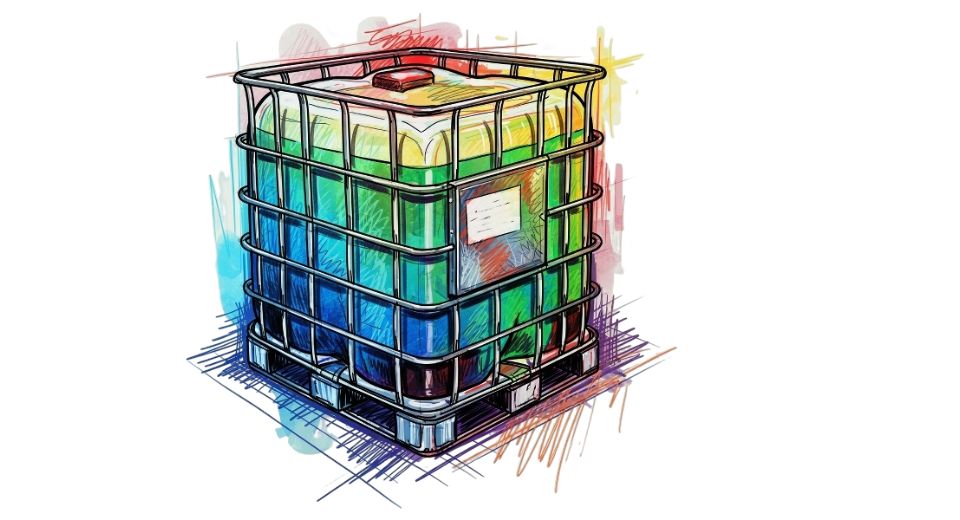
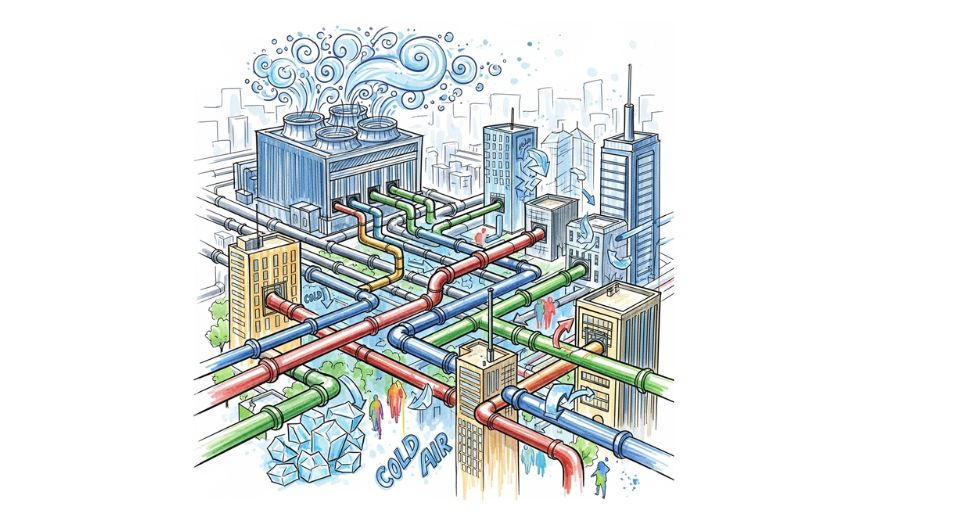
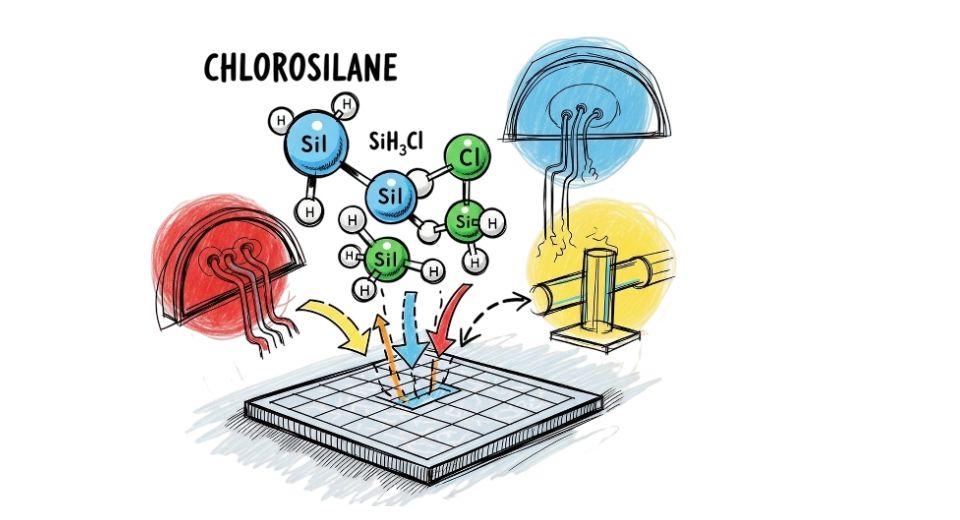

 US: +1 3023308252
US: +1 3023308252






